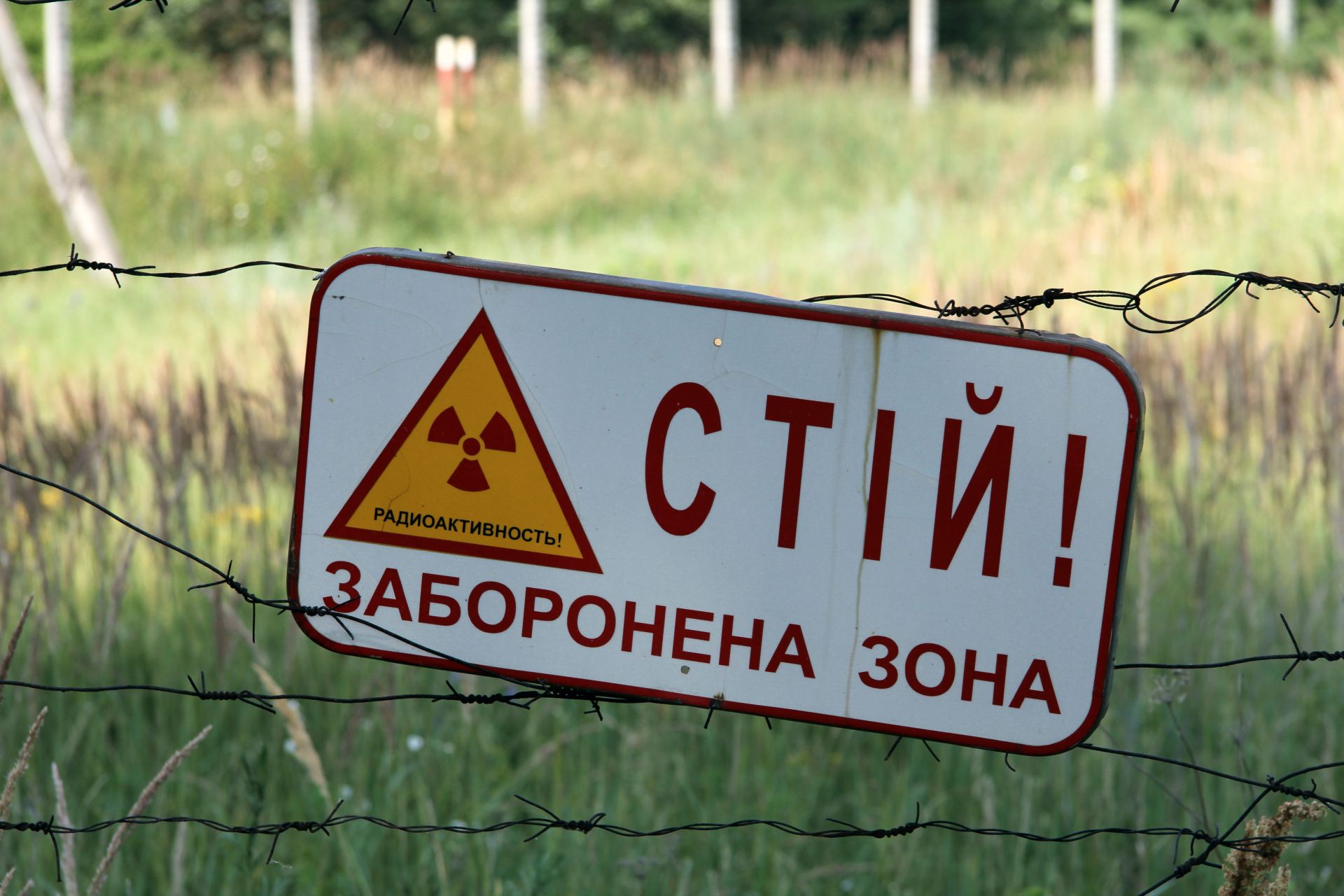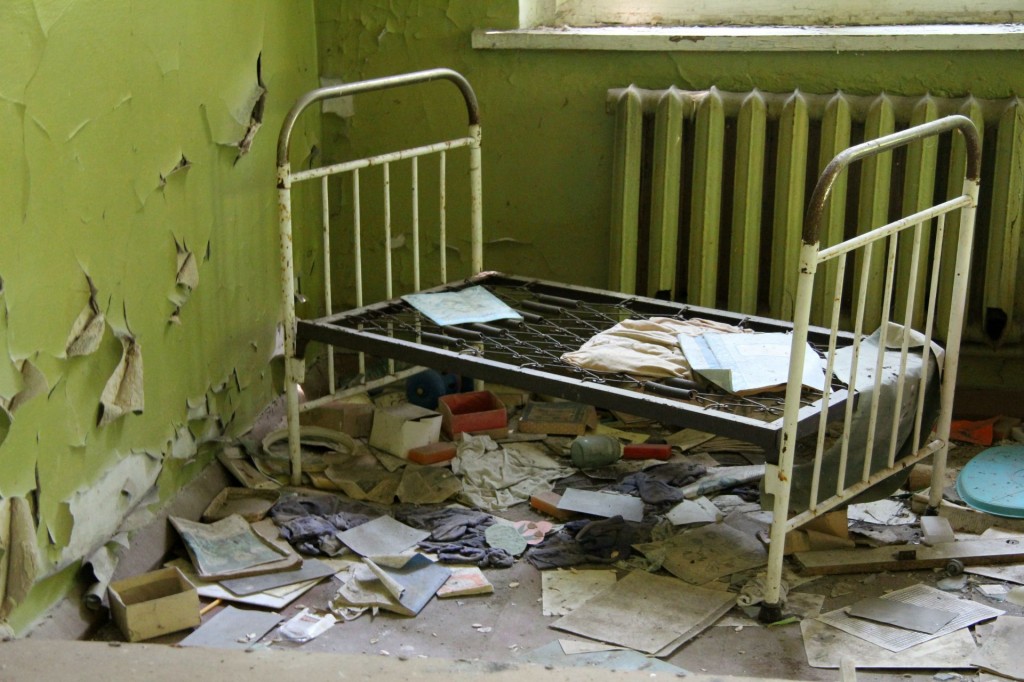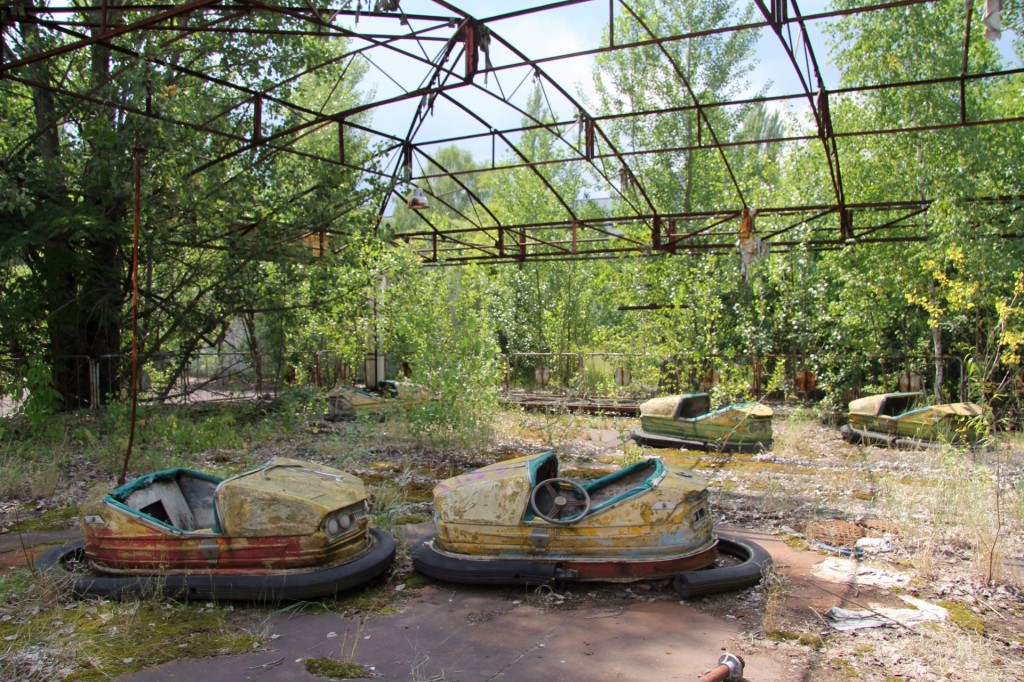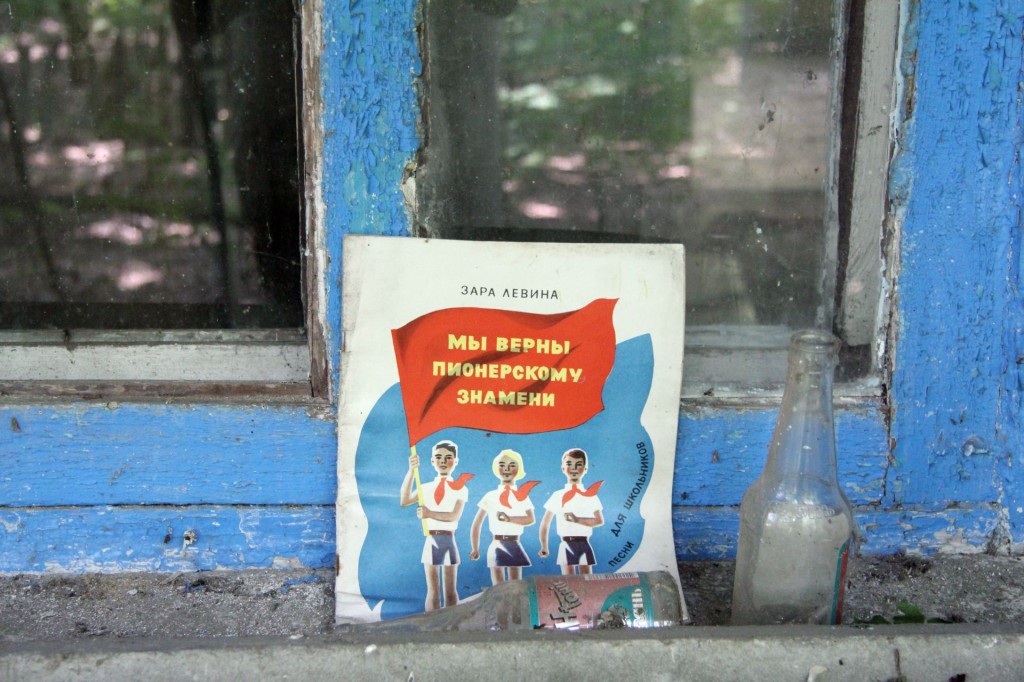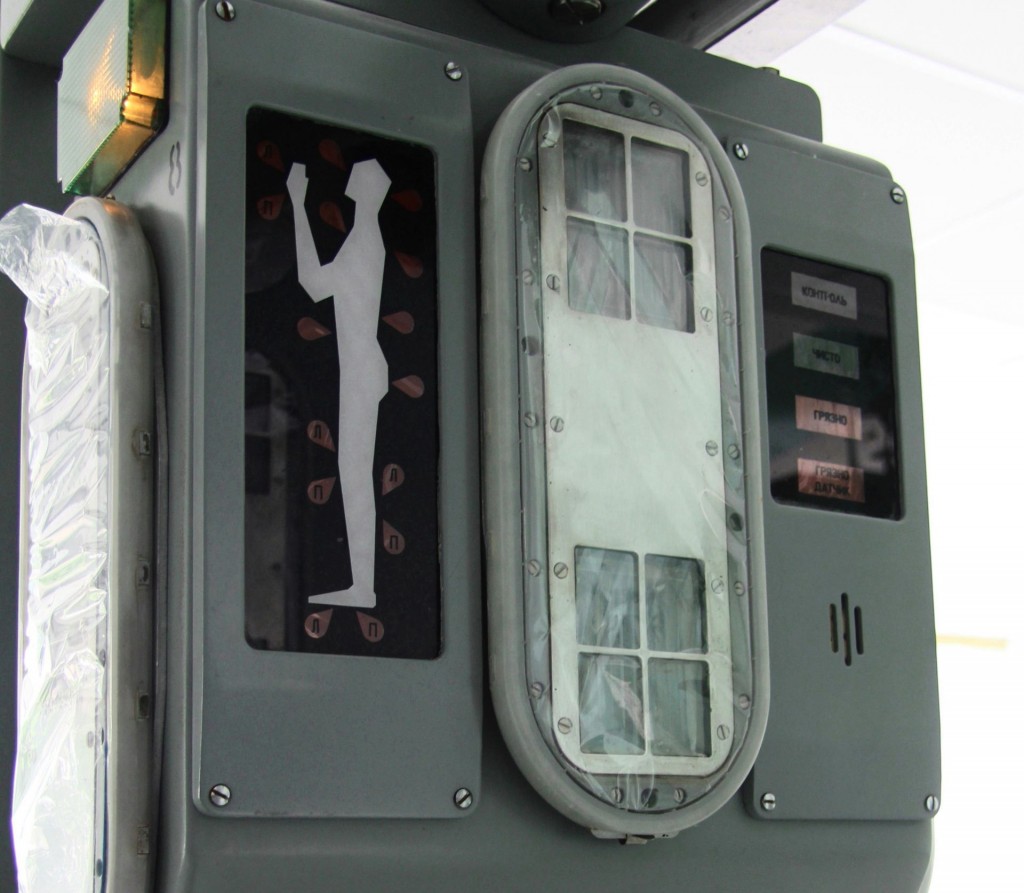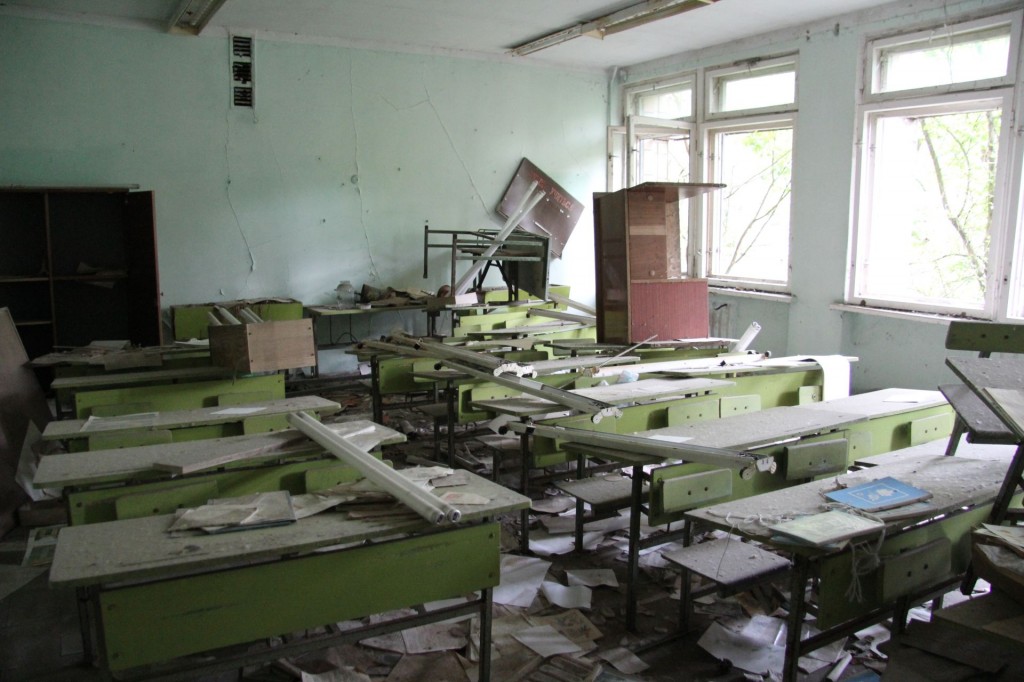During our stay in Ukraine this summer, we also visited the Chernobyl museum in Kyiv, where we learned more about the catastrophic nuclear accident that happened on April 26, 1986, at the Chernobyl Nuclear Plant. As this place is not far away from Kyiv, we decided to book an excursion and visit the “Chernobyl Exclusion Zone”. Chernobyl became a tourist destination in 2002 and the number of tourists has been growing from 870 in 2004 to several thousands in the last few years.
After a two-hour drive by minibus, we arrived at the border of the 30-km Chernobyl zone dressed in the prescribed clothes: a shirt with long sleeves, trousers, boots and an appropriate cap. At the checkpoint we were welcomed by various warning signs: “Stop! Radioactivity!” We also had to sign a statement that we would take full responsibility for possible health consequences of our visit. In the near-by town of Chernobyl we got a briefing from our English speaking guide and we were provided with masks “to be used in case of need”. Finally we continued our bus trip through a completely abandoned area. We neither saw nor heard any living beings, the silence was horrible. In the vicinity of the Chernobyl Nuclear Power Station we could see Reactor 4 – covered by a so-called concrete “sarcophagus” – from a safe distance.
On our way we passed through abandoned villages, where abundant vegetation had already taken possession of the dilapidated houses and former agricultural land that has been reclaimed by trees and grass. Birds and animals have disappeared. Visiting the remains of a kindergarten, we were deeply moved by toys and dolls that had been forgotten in the courtyard and by the children’s empty beds inside. The guide told us that some older people had returned to their villages in the meantime, but nobody is willing to live in the town of Pripyat, 3 km from the plant.
Pripyat, a town with almost 50,000 inhabitants at the time of the disaster, is also called “The Ghost Town”. The high radiation levels forced the evacuation of more than 100,000 people from the region within 48 hours after the disaster. I could imagine the fear and despair of the people who had to leave everything, knowing that they would never come back. We took a walk through the empty roads, passed abandoned buildings with broken windows and visited the swimming-pool area, the playgrounds and the ferris wheel.
The elementary school looked like a bad dream: everything was destroyed, the chaos was complete. We could still see the communist textbooks that were used at that time. Buildings are rotting now, paint is peeling and looters have taken away anything that might have been of value.
Our lunch was provided in Chernobyl in the restaurant of the nuclear plant workers. At the entrance we had to pass through special scanners in order to check us on possible radioactive contamination. Of course, there is no real radiation danger any more, but control remains severe.
Twenty-six years after the accident, debate still rages about the number of directly related deaths. The World Health Organization (WHO) suggests the final figure could reach 4,000 civilian deaths, but the numbers presented for consequential death from radiation exposure induced illness and cancer range towards around 200,000 potential casualties.
Let’s hope that such disasters will never happen again!
